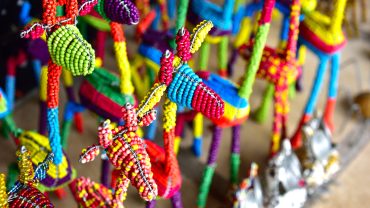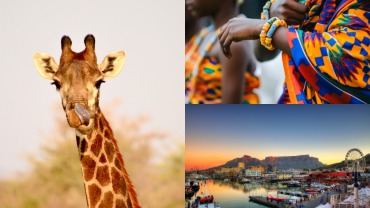Planning a safari is incredibly exciting. You’re dreaming of vast landscapes, incredible wildlife, and unforgettable moments. A key decision you’ll face is when to head out on your game drives. Should it be a morning safari, an afternoon safari, or a magical sunset safari? Each time of day offers unique advantages and disadvantages. This guide from Knap Tours will help you decide which is the best time for your safari.
Let’s explore the distinct characteristics of each option. We’ll delve into animal behaviour, photographic opportunities, comfort levels, and the general atmosphere you can expect. Ultimately, your choice will shape your wildlife encounter.
The Charm of a Morning Safari: Early Birds Catch the Wild
A morning safari is often considered the classic choice by seasoned safari-goers. It typically begins before dawn, requiring an early start. However, the rewards for rising early are immense. You’ll be among the first to enter the wilderness, experiencing the awakening of the bush. Explore our diverse safari packages, including morning drives, on the Knap Tours website.
Why Choose a Morning Safari?
- Peak Wildlife Activity: Animals are most active during the cooler hours of the early morning. Many predators, like lions and leopards, use the cover of darkness to hunt. As dawn breaks, they are often still finishing their hunts or resting near their kills. This presents fantastic viewing opportunities. Furthermore,
 herbivores are grazing actively after the long night. You might see large herds moving to water sources or finding the best spots for breakfast.
herbivores are grazing actively after the long night. You might see large herds moving to water sources or finding the best spots for breakfast. - Best for Predator Sightings: If seeing a lion or leopard is high on your list, a morning safari significantly increases your chances. These majestic creatures prefer the cool temperatures. They are more likely to
- ess a dramatic chase or simply observe them relaxing after a successful night.
- Optimal Light for Photography: The “golden hour” right after sunrise offers soft, warm light. This light is perfect for photography. It creates beautiful hues and minimizes harsh shadows, resulting in stunning images. Animals often appear more vibrant in this gentle glow. A good photograph can truly capture the essence of your morning safari.
- Cooler Temperatures: The early morning air is wonderfully crisp and cool. This makes for a very comfortable experience in open safari vehicles. It’s much more pleasant than the midday heat, especially in summer months. You can relax and focus on spotting wildlife without feeling uncomfortable.
- Experiencing the Bush Awaken: There’s a unique serenity that comes with witnessing
the sunrise over the African plains. The sounds of the bush slowly come alive. Birds begin their morning chorus. The air smells fresh and earthy. This adds a profound sensory dimension to your morning safari. It’s a truly immersive experience.
Considerations for a Morning Safari:
- Early Start: You will need to wake up very early, often before 5:00 AM. This can be a challenge for some, especially if you’re not a morning person. However, the excitement of the safari usually outweighs th
e early alarm. - Chilly at First: Even in summer, early mornings can be quite cold, especially in open vehicles. Dressing in layers is essential. You can shed clothes as the day warms up. A warm jacket or blanket is highly recommended for your morning safari.
- Potential for Dew: Early morning dew can sometimes make spotting more difficult. However, the tracks left in the dew can also be useful for your guide.
The Vibrancy of an Afternoon Safari: A Different Perspective
An afternoon safari typically begins in the mid-to-late afternoon, giving you time to relax after lunch. It offers a different, yet equally rewarding, perspective on the bush. As the day progresses, animal behaviour changes. For more insights into daily safari itineraries, visit the Knap Tours FAQs page.
Why Choose an Afternoon Safari?
- Animals Heading to Waterholes: As the day warms up and then begins to cool, many animals, particularly herbivores, will move towards waterholes. This is to drink and cool down. Sitting by a waterhole can offer incredible concentrated viewing opportunities. You might see elephants, zebras, giraffes, and various antelope species converging.
- Good for Spotting Diverse Species: While predators might be less active in the heat of the middle afternoon, they start to stir as temperatures drop. You can still spot a wide range of animals. Birds are often more active later in the d
 ay. Many smaller creatures also become more visible. An afternoon safari allows for a broader spectrum of sightings.
ay. Many smaller creatures also become more visible. An afternoon safari allows for a broader spectrum of sightings. - Comfortable Pacing: An afternoon safari doesn’t require the very early start of its morning counterpart. This can be more appealing if you prefer a more relaxed pace to your holiday. You can enjoy a leisurely breakfast and lunch before heading out.
- Warm, Soft Light as the Day Ends: As the sun begins to descend, the light changes. It becomes warmer and softer, similar to the morning’s golden hour. This creates lovely lighting for photographs. The colours of the landscape deepen. This light is particularly beautiful for capturing the vastness of the African plains during your afternoon safari.
- Leading into a Sunset Experience: Often, an afternoon safari naturally transitions into a sunset viewing. This combination gives you the best of both worlds. You get the daytime sightings and then the breathtaking colours of dusk.
Considerations for an Afternoon Safari:
- Midday Lull: The very early part of an afternoon safari can sometimes coincide with the hottest part of the day. Animals tend to rest or seek shade during these hours. This might mean fewer active sightings initially. Your guide will know where to look.
- Less Predictable Predator Sightings: While possible, seeing active hunting predators might be less frequent compared to the early morning. They often become more active as it gets cooler, closer to dusk.
- More Vehicles: Depending on the reserve, there might be more vehicles out on an afternoon safari compared to the very early morning. However, good guides will always strive to give you a private viewing experience.
The Magic of a Sunset Safari: Golden Hues and Night’s Embrace
A sunset safari, often combined with a night drive, offers a truly unique and often romantic experience. It starts in the late afternoon and continues as the sun dips below the horizon, extending into the twilight hours. To discuss specific sunset safari options, contact the Knap Tours team directly.
Why Choose a Sunset Safari?
- Stunning Photographic Opportunities: The “golden hour” leading up to sunset is absolutely magical for photography. The sky explodes with vibrant colours – oranges, reds, purples. Silhouettes of animals against this backdrop are breathtaking. Every picture taken during a sunset safari becomes a work of art.
- Witnessing Nocturnal Animals Emerge: As darkness falls, a whole new world awakens. This is when nocturnal animals start to become active. You might see civets, genets, bushbabies, porcupines, or even the elusive aardvark. This adds a completely different dimension to your wildlife viewing.
- Predator Activity Increases: Many predators, especially leopards and hyenas, are more active after dark. A sunset safari that extends into a night drive significantly increases your chances of seeing these incredible hunters on the move. Their eyes glowing in the spotlight are an unforgettable sight.
- The “Sundowner” Experience: This is a quintessential safari tradition. You’ll typically stop at a scenic spot to watch the sunset, often with a refreshing drink and snacks. It’s a moment of pure bliss and reflection. Sharing this moment with fellow travellers is a wonderful experience during your sunset safari.
- Different Sensory Experience: The sounds of the bush change dramatically at night. The air cools. The stars begin to emerge, creating a spectacular display. The beam of the spotlight cutting through the darkness builds anticipation. It’s a truly immersive sensory journey.
Considerations for a Sunset Safari:
- Chilly Nights:Once the sun sets, temperatures can drop significantly, sometimes very quickly. Warm clothing, including hats, gloves, and scarves, is crucial for your comfort. Blankets are usually provided by the safari vehicle.
-

Spotlight Limitations: While spotlights help in seeing nocturnal animals, the viewing experience is different from daytime. Animals are often seen in isolation rather than large groups. The light can also be intense for some animals.
- Fewer Bird Sightings: Most birds roost as darkness approaches, so you’ll see fewer bird species compared to morning or afternoon drives.
- Potentially Shorter Game Drive: Some reserves might have restrictions on how long night drives can be, so the active game viewing portion might feel shorter than a full morning safari or afternoon safari. However, the quality of sightings can be very high.
Making Your Choice: Which Safari is Right for You?
Now that we’ve explored the unique aspects of each, how do you decide between a morning safari, an afternoon safari, or a sunset safari? It truly depends on your priorities and what you hope to experience.
Consider Your Priorities:
- Are you a serious wildlife photographer? If capturing incredible images is your main goal, the soft, warm light of both the morning safari and the sunset safari (the golden hours) will be most appealing. The early morning often provides more active predator sightings.
- Is seeing active predators your top priority? Then a morning safari offers the best chance, especially for lions and leopards. A sunset safari extending into a night drive is excellent for nocturnal predators like leopards and hyenas.
- Do you prefer a more relaxed pace? An afternoon safari avoids the very early start. It allows for a more leisurely morning. However, even an early morning safari often has a relaxing breakfast break.
- Are you fascinated by nocturnal animals? The sunset safari (with night drive) is absolutely essential for you. This is your only real chance to see creatures that are normally hidden during the day.
- Do you want to witness diverse animal behaviour? A combination of safaris is ideal. A morning safari for hunters finishing their work, an afternoon safari for animals gathering at water, and a sunset safari for nocturnal activity.
- What are your comfort preferences? If you struggle with cold, the middle part of an afternoon safari might be most comfortable. If you don’t mind layering up, the magic of dawn and dusk is unparalleled.
The Best Approach: A Combination!
For most travellers, the optimal strategy is to experience a mix of all three. On a typical 3-day safari, you’ll often have multiple game drives. This usually means you can enjoy a morning safari, an afternoon safari, and sometimes a sunset safari (often transitioning from an afternoon drive). This multi-faceted approach offers the most comprehensive wildlife viewing.
For example, you might start with a thrilling morning safari to track predators. Then, after a relaxing break, head out on an afternoon safari to see herbivores at waterholes. Finally, one evening, enjoy a dedicated sunset safari that extends into a night drive. This varied schedule provides incredible opportunities to see animals in different light, exhibiting various behaviours. It allows you to appreciate the full rhythm of the wilderness. Knap Tours offers tailored itineraries to maximize your wildlife experience.
Final Thoughts
No matter when you choose to go, remember that every safari is a unique experience. Wildlife is unpredictable, and that’s part of the thrill. Be patient, keep your eyes open, and trust your experienced guide. They possess incredible knowledge of the local environment and animal patterns. For general information on South African National Parks, you can also visit the SANParks website. Similarly, for those interested in Namibia, the Namibia Tourism Board offers valuable resources.
Whether you choose the crisp air and active predators of a morning safari, the relaxed pace and waterhole action of an afternoon safari, or the magical golden light and nocturnal discoveries of a sunset safari, you are in for an extraordinary adventure. Each moment spent in the wild is precious. Embrace the journey, and prepare to be amazed by the incredible natural world.
We hope this guide helps you make an informed decision for your unforgettable safari journey with Knap Tours. Enjoy every single moment!





Comment (0)